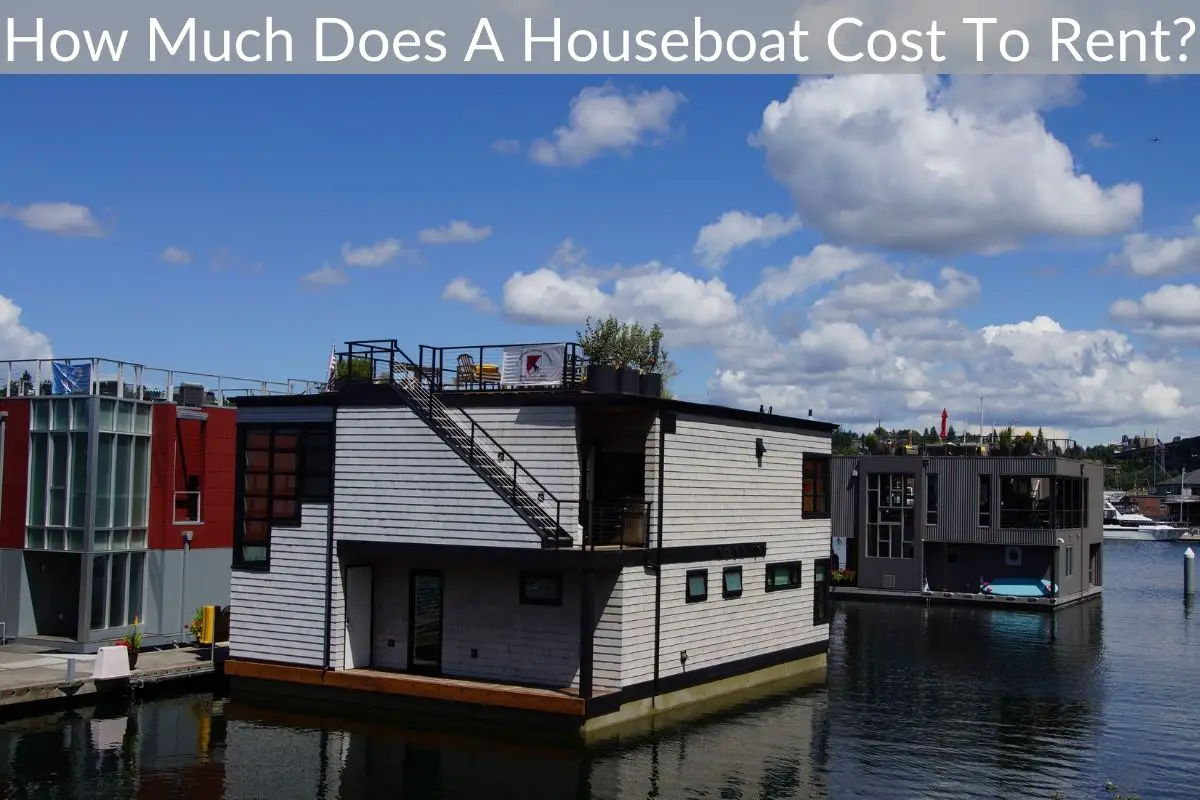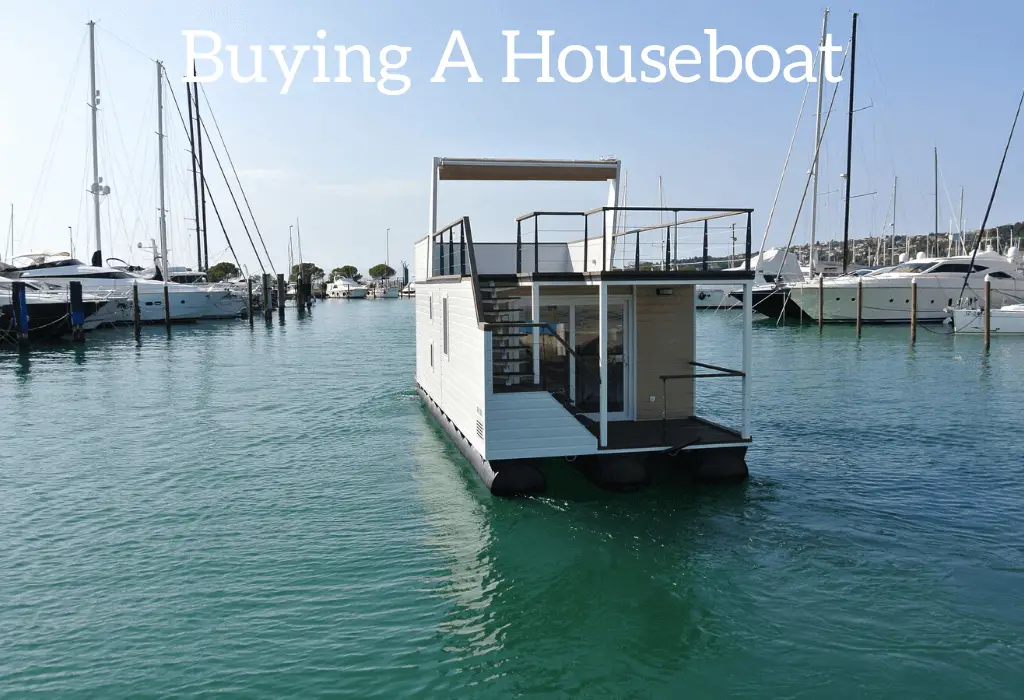Houseboats are one of the most unique places that people can afford to live in (we can’t all afford castles!). The mere fact that you can live comfortably on a boat is the driving factor of using houseboats as a home. Transforming your houseboat into a home and living on the open water is an incredible feat.
*This post may contain affiliate links. As an Amazon Associate we earn from qualifying purchases.
If these features appeal to you and you are looking to build your own houseboat or are simply curious about how houseboats are built then this article is for you.
The walls of the houseboat are one of the few things that protect those on a houseboat from the elements outside so knowing what exactly they are made of is important especially if you plan on living on a houseboat year around.
When you look at a houseboat and the walls you really have 3 different types of walls on a houseboat. Those are the exterior walls, the interior walls, and the walls of the hull. Knowing what all three of these are made of as well as how well insulated they are is important to how well the houseboat stays warm in the winter and cool in the summer.
There are a wide range of materials that are used for houseboat walls and the age of the houseboat has a lot to do with which material is used. Most houseboat wills will be made of:
- Wood
- Fiberglass
- PVDF
- Aluminum
- Polyester
- Polyethylene
- Composite
Age and price has a lot to do with what materials will be used on a specific houseboat as older ones might simply have wooden walls while newer more expensive houseboats will be made with much better quality products that are mold and waterproof or resistant.
In this article we will look more at the types of materials used for houseboat walls as well as some ways to prevent damages and leaks to protect your houseboat and to help it last as long as possible.
What Are Houseboat Walls Made Of?
There are a wide range of materials that are used to construct a well-made houseboat. These construction materials may vary depending on the model, manufacturer, specifications, and design of the houseboat. However, generally, houseboats are made of the following construction materials:
- Fiberglass
- PVDF
- aluminum
- polyester
- Polyethylene
- or composite panels for walls and roofs
In contrast to commonly-used materials, fiberglass, plywood, and aluminum, composite panels have a host of benefits that you should take advantage of. These include:
- Durable and long-lasting
- Easy installation
- Lightweight
- Low maintenance
- Wide range of colors and shades available
However, composite panels are more expensive than standard construction materials. Regardless, the full range of benefits obviously outweighs the hefty price tag that comes with this type of composite panels.
With that being said, you should know that the ultimate decision is up to you and your preferences if you are the one building the houseboat.
Now that you understand the commonly-used materials, we will now look at the materials that usually make up certain areas of the houseboat and the solutions for any frequent issues that may arise.
The Exterior Walls
Starting from the outside, the exterior walls serve a vital purpose. The exterior walls of a houseboat are usually constructed with fiberglass reinforced panels (FRP), which are widely recognized as being durable and lasting a lifetime. Cabins of the houseboat house the necessary rooms for your houseboat, which entails the kitchen, bathroom, bedrooms, and so forth.
These cabins are normally built separately and then pieced together by the manufacturer or builder. These joints are shown by the vertical moldings that are cut and fixed to the side of each cabin.
To prevent any leakage, damage, or water invasion, it is vital that you caulk the exterior walls of the houseboat properly. Caulking will allow you to make the houseboat watertight and less prone to water leaking by filling gaps in the hull of the boat.
If you or the builder skip this step, there is the high potential of the houseboat being quickly damaged. This can occur when water seeps into the interior of the boat and rots the wooden frame or simply gets into the living areas and turns into mold.
Similarly, in the colder climates, there is the possibility of water entering the internal structure of the boat, then freezing and expanding. This will result in the inner panels separating and becoming virtually worthless.
What’s more, when the temperatures become warmer, the separation caused by the expanding ice does not come back together. Instead, you will be left with a lasting gap in the inner panels that can get even wider over time.
Hence, the importance of ensuring that your houseboat is adequately caulked. Take the time to sufficient search for gaps and then re-caulk them with mildew-resistant silicone caulk to ensure a complete seal.
The Upper Deck
The top deck can also take into account the beautifully-crafted arches, party top, and even an upper floor. These can be crafted by a wide range of construction materials that showcase your personality, preferences, and needs. However, some issues can occur from this area of the houseboat. It is essential that you understand how to manage these problems so that they will not worsen over time.
If you opt to use railings on the top or upper deck, it will have to be screwed from the upper deck into the roof structure of the lower deck. The purpose of the railings is to support weight and prevent any accidents that can happen on the houseboat.
When the houseboat is supporting a lot of weight, after a time, the railing and its attaching screws can start to loosen. These will result in gaps in the structure, which can further lead to water seeping in, freezing, and expanding the holes.
Similar to the issue above, try and search for these areas, even though it may take skilled eyes. If there is damage, you can either try caulking the areas yourself or call a competent professional for help.
The Inside Walls
We have explored the exterior and upper deck, now it is time that we look at the inside of the houseboat. One of the most essential features of a houseboat is insulation for keeping you and the occupants warm during the winter.
However, despite its importance, it is usually overlooked.
Generally, the windows, floors, and walls ought to be insulated, but, at times, they are not. If you are working on a pre-built houseboat that is not insulted, there is not much that you can do with the windows and walls. On the other hand, you can insulate the floors of the houseboat.
The hull of the houseboat is usually crafted with aluminum that is approximately 3/16 inches in thickness. Aluminum is an exceptional heat conductor and will play a vital role in regulating the temperatures of your houseboat during both the winter and summer months. What happens is that the hull of the houseboat shifts the heat from the boat to the space underneath the floor. Another material that you can use for thermal insulation is plastic wrapped R13 insulation. This can be easily sourced from your local hardware or home improvement store.
Installation is also simple since all you have to do is roll it out along the floor joists and lower walls. This will help you to maintain and regulate the temperature of your houseboat regardless of the climate. Furthermore, it is relatively cost-effective as the cost of the materials for this project can range from $200-$300 and only takes about 6 hours to complete.
What Have We Learned?
Houseboats are a popular, refreshing, and cost-effective way to live. Whether you are building one yourself or interested in knowing more about the intricacies of houseboats, you should know that they are crafted with a wide range of materials.
The materials used for houseboats include fiberglass, PVDF, aluminum, polyester, polyethylene, and composite panels. Each area of a houseboat calls for a particular construction being used however, the choice of materials mostly depends on you and your preferences and needs.
In addition to this, there are a few issues that can occur, which is why it is essential to regularly inspect the houseboat and address each issue that may arise. For if you choose to turn a blind eye, your problems will worsen further, leading to leakage and the rotting of the houseboat.









